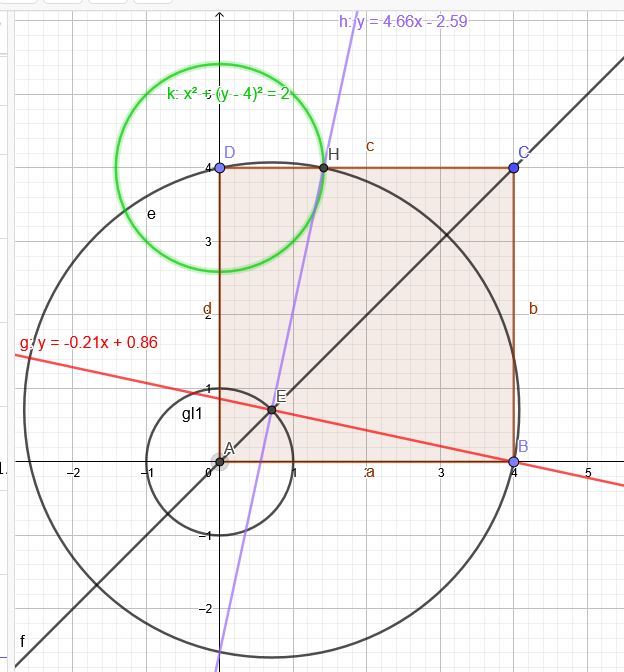\(A(0|0), B(4|0),C(4|4),D(0|4)\)
Einheitskreis: \(x^2+y^2=1\) geschnitten mit \(y=x\) \(E(\frac{1}{\sqrt{2}}|\frac{1}{\sqrt{2}})\)
Länge von Strecke EB:
\((4- \frac{1}{\sqrt{2}})^2+(\frac{1}{\sqrt{2}})^2=(EB)^{2} \)
\(16-\frac{4}{\sqrt{2}}+\frac{1}{2}+\frac{1}{2}=(EB)^{2} \)
\(16-\frac{8}{\sqrt{2}}+1=(EB)^{2} \)
\(16-4*\sqrt{2}+1=(EB)^{2} \)
\(EB=\sqrt{16-4*\sqrt{2}+1}≈3,36 \)
Gerade durch E und B: \(y=-0,21x+0,86\)
Normale durch E: \(y=4,66x-2,59\)
Kreis um E mit \(r^2=17-4*\sqrt{2}\) schneidet Normale in H.
Der Radius des Kreises um D beträgt nun \(r=\sqrt{2}\)
